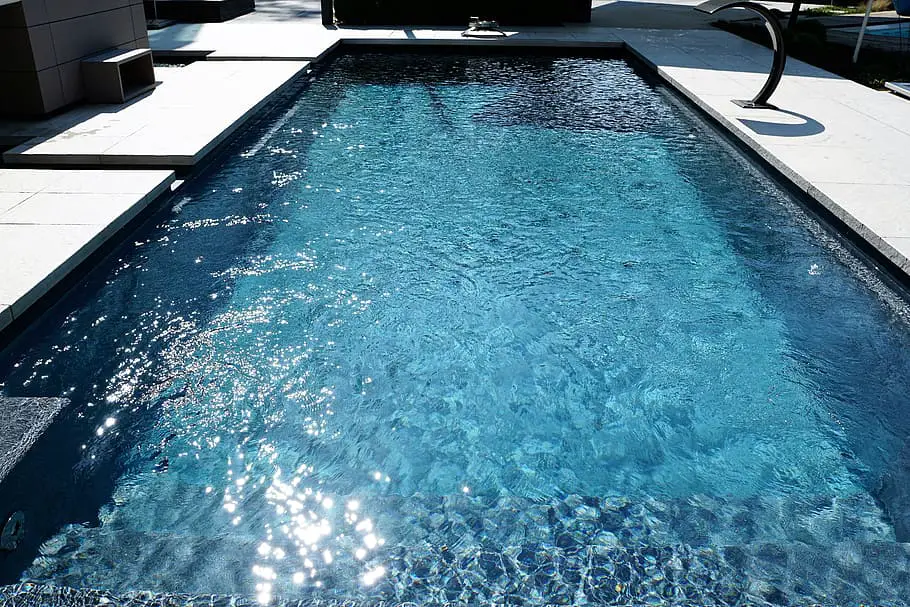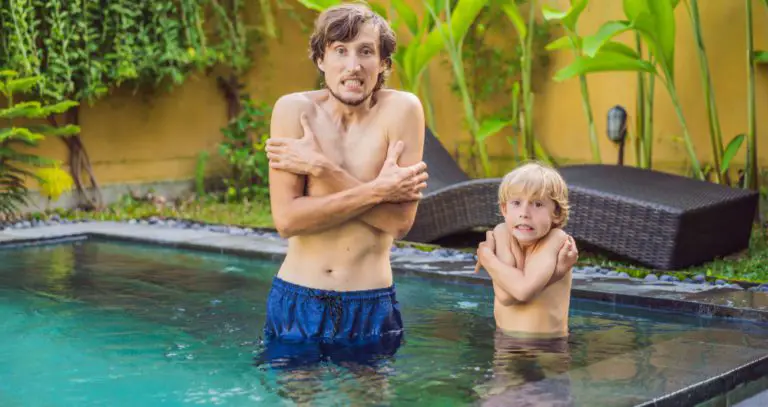Regardless of whether you’re planning to install your very first pool in your home or you’re currently interested in elevating your current pool with the option to turn your water warm, a pool heat pump is a great way to elevate your pool with a touch of luxury.
Generally speaking, pool heat pumps work by utilizing all of the heat created by the warm air that surrounds the pool, using the help of electricity to power the fan of the heat pump, which in turn helps to warm up pool water – no matter how cold it might be.
Nevertheless, if you’ve found yourself on this article, then chances are you’re interested in learning a little bit more about the details of exactly how pool heat pumps work – and we’re here to lend a helping hand! Curious about all the ways to heat a pool? Check out our article on how swimming pools are heated!
Below, we’ll talk you through what a heat pool pump actually is, as well as an in-depth explanation of how they work. Read on.
What Exactly Are Pool Heating Pumps?
To cut a long story short, a swimming pool heat pump is essentially a device that is able to effectively capture surrounding heat from the air, in order to help warm up your pool water.
Unlike other types of heating pool systems, the main appeal of pool heat pumps is that they are generally very affordable, and are widely considered to be the most energy efficient way of warming a pool.
Thanks to this, not only will this equate to a far lower utility bill at the end of the month, but it also means that pool heat pumps are one of the more environmentally friendly options to warming a pool, too.

How A Swimming Pool Heat Pump Works: The Step-by-Step Breakdown
Even though we’ve talked you through the basics of how a pool heat pump works above, it can be pretty hard to understand how it works in practice.
So, below, we’re going to be breaking down how a typical pool heat pump works. Let’s take a look:
1. The Pool’s Filter Pump Sends Water To The Heat Pump
As we’ve already covered above, a pool heat pump will need a consistent and regular steam of water in order to function properly – which means that your pool’s filter pump is one of the most important parts of the all around heating system.
This means that, as soon as the pool’s filter pump is able to send water to your swimming pool’s heater, the heating system will then begin to take place.
As a side note, it’s important to keep in mind that this process can take up to 30 minutes (or sometimes even longer) to successfully carry out, especially if your pool water is already quite cold.
2. The Heat Pump’s Fan Circulates Warm Air
So, even though the pool’s filter pump is one of the most important components of the heating process, the heat pump is where all the hard work takes place.
To begin, as soon as the water begins flowing through the pump, your pool’s heat pump will then begin to start spinning its fan – which is more often than not situated at the very top of the pump, although it can occasionally be situated underneath.
When the fan begins to turn, it will begin to create a warm airflow that will suck in all of the surrounding air while distributing warm air as it passes through the evaporator coil – which will help to warm the water slowly but consistently.
3. The Evaporator Coil Collects Heat
Once the heat pump is sprung into action and its fan begins to spin, the warm air that gets pulled in by the evaporator coil will then begin to interact with the cold water inside it.
By doing this process over and over again, the cold water inside the evaporator coil will soon begin to heat up.
As soon as enough air has passed through the evaporator coil, phase two of the heating process will then begin to take place.
4. The Evaporator Coil’s Liquid Is Transformed Into Hot Vapor
After enough heat has been collected from the evaporator coil, the air that has built-up and passed through the cold water/liquid held inside the evaporator coil will then transform into hot fumes.
The hot vapor is crucial to successfully heating the pool, so in order for the heating process to effectively heat the entirety of the pool, the liquid held inside the evaporator coil’s liquid can only be vapor.
Luckily, thanks to the fan of the heat pump constantly pulling in air, consistent hot vapor will begin to be released via the end of the evaporator coil.
5. The Pool’s Compressor Pressurizes The Vapor To Create Gas
As soon as the evaporator coil’s liquid has been transformed into a vapor, the compressor will then work to change the vapor into gas.
In order to achieve this, the compressor works to pressurize the vapor as soon as it enters the chamber, where the compressor will then increase the temperature to turn the vapor into a gas.
As soon as the gas is created, it is then released from the chamber compressor into the heat exchanger.
6. The Swimming Pool Water Flows Through The Heat Exchanger
As the swimming pool water begins to flow through the main outer tube of the heat exchanger, the water will also flow past the inner tube, which is made of titanium and extremely hot. During this exchange, the swimming pool water is heated up, all the while cooling down the hot gas.
After this takes place, the heated water will then leave the heat pump and be distributed back into the pool, while the hot gas gets transferred back into cold water so that it can be re-used for the next round of water.
This newly created cold water is then transferred through the expansion valve to cool it down even more, before then being transferred back into the evaporator coil.
From this point, the process will start all over again – until all of the pool water has warmed up! For a quick video explanation, check out the 3 mintue video from Luxury Pools and Living Ohio below.

Hello, I am a writer and marketing specialist in Kansas City, MO. My love for swimming pools started as a child when I would visit my aunt & uncle’s inground swimming pool on a frequent basis over the summer. Since then I have taught swimming lessons at a Boy Scout Camp, participated in the full setup, installation and maintenance of my father’s inground swimming pool, as well as enjoyed constantly researching everything there is to know about swimming pools for 5+ years. I enjoy all water related sports, being part of the online swimming pool community and always learning new things!


Leave a Reply